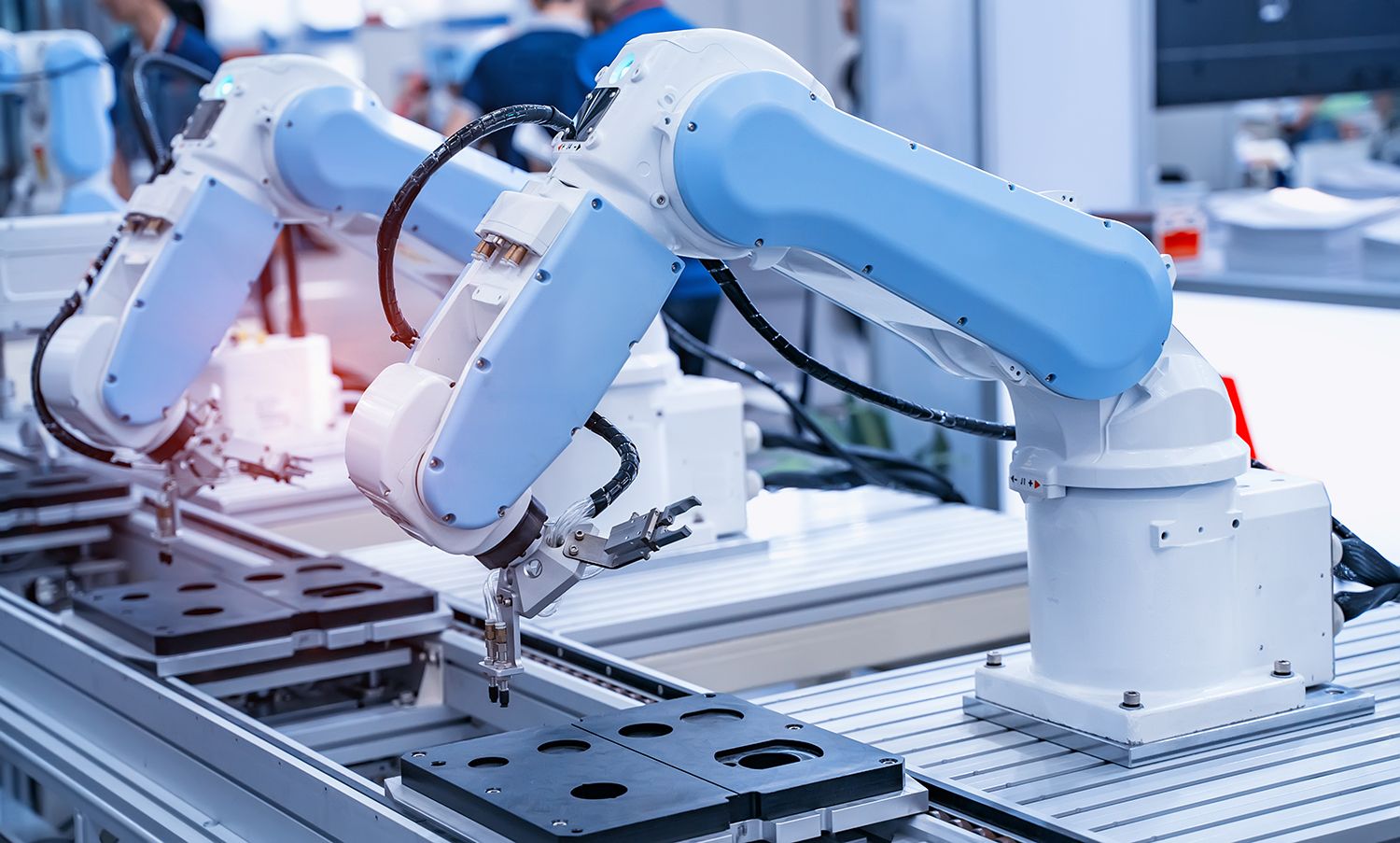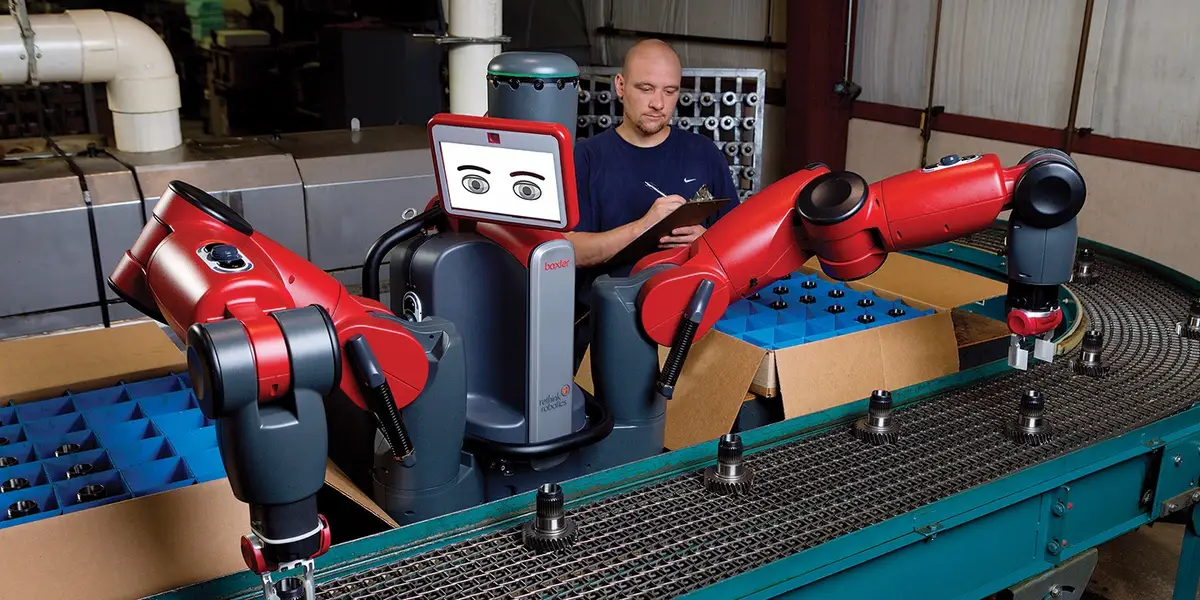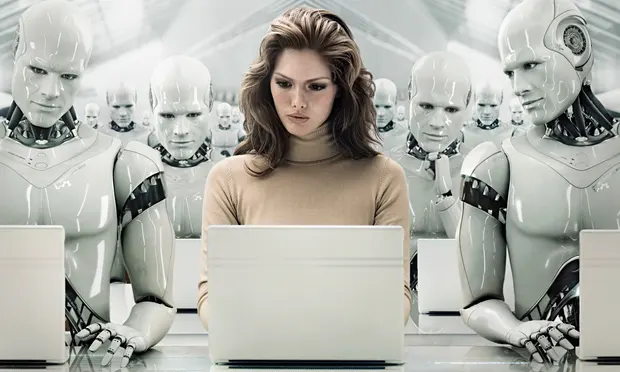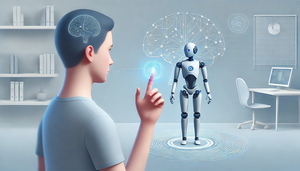The advent of the 21st century brought with it a technological revolution that has sparked both awe and fear in the hearts of many. The rise of robots and artificial intelligence (AI) presents us with a profound question: are we prepared for a world in which machines play an increasingly dominant role in the labor market?
As we delve into this great debate, we'll explore how we can harness the potential of robotics and AI while safeguarding human labor. By blending innovation and compassion, we can ensure prosperity for all in the age of automation.
Although the internet seems to be inundated with new AI tools and technologies every day, the same cannot be said for the realm of ethics. The development of ethical frameworks for AI is a slow and highly debated process, with legislative bodies often lagging behind the conversation. As a result, progress can be slow. In our monthly reports, we will continue to track developments in this area, whether they be positive or negative.
The Early Days of Robotics and Automation
The history of robotics dates back to the 20th century when the first industrial robots emerged in the late 1950s and 1960s. These early robots were primarily used in manufacturing, with the automotive industry being an early adopter. The introduction of robots in the workforce raised concerns about the displacement of human labor, but it also brought about significant increases in productivity, efficiency, and safety.
The early robots were simple, limited in their capabilities, and often required considerable human input to function. However, as time went on, technological advances allowed for the development of more sophisticated robots. This evolution was accompanied by a growing interest in artificial intelligence, which sought to mimic human thought processes and decision-making in machines.
Robotics and AI: A Double-Edged Sword
As robots and AI became more advanced, the fear of job displacement began to grow. There's no denying that these technologies have the potential to render certain jobs obsolete, particularly those that are repetitive and require minimal human input. In the manufacturing sector, for example, the adoption of automation led to a decline in the number of factory workers.
On the other hand, the rise of robotics and AI has also created new job opportunities. The demand for highly skilled workers in fields such as software development, data analysis, and robotics engineering has surged in recent years. Moreover, some experts argue that as automation takes over mundane tasks, it allows humans to focus on higher-level cognitive tasks, such as problem-solving and decision-making. In this sense, the rise of robots and AI could complement rather than replace human labor.

Balancing Innovation and Compassion: The Path Forward
The challenges posed by the rise of robotics and AI are indeed profound, but they are not insurmountable. By embracing innovation and compassion, we can navigate these uncertain waters and create a future that is both technologically advanced and socially equitable.
Education and re-skilling:
As some jobs become obsolete, it is crucial to invest in education and training programs that help workers adapt to the new labor market landscape. This includes initiatives such as vocational training, lifelong learning, and online education platforms.
Collaborative robots (cobots):
Cobots are designed to work alongside humans, rather than replace them. By integrating Cobots into the workforce, we can enhance human productivity while maintaining job security. Examples of cobots include the Baxter robot, which assists with tasks such as material handling and packaging. Let me know in the comments below if you would like an in depth review of Baxter. It only cost $22,000, yah know pocket changes for… Elon!

Universal basic income (UBI):
The idea of providing a guaranteed income to all citizens, regardless of employment status, has gained traction in recent years as a potential solution to job displacement caused by automation. While UBI remains a hotly debated topic, it is worth exploring as a means of ensuring financial stability for those affected by the rise of robots and AI.
Emphasizing uniquely human skills:
As robots and AI continue to evolve, it is essential to recognize and nurture the skills that are uniquely human. These include creativity, empathy, critical thinking, and complex problem-solving. By focusing on developing these skills in our workforce, we can create new job opportunities and ensure that humans continue to play a vital role in the economy.
AGI or Artificial General Intelligence is many years away and even when that will become a reality, it will take significant time to craft the inner power of human creativity and spontaneous abilities.
Regulation and ethical guidelines:
In order to ensure that the rise of robots and AI benefits society as a whole, it is crucial to establish regulatory frameworks and ethical guidelines that govern their use. This includes addressing concerns related to privacy, accountability, and the potential for biased decision-making.

In conclusion, the great debate surrounding robots, AI, and the future of human labor is far from over. As we continue to grapple with the implications of these technological advancements, it is essential that we strike a balance between embracing innovation and safeguarding human labor. By doing so, we can shape a future that is both prosperous and compassionate, ensuring the well-being of all in the age of automation. 🌍🤖❤️
As everything there’s a balancing act that as species we have to find to a new reality that is not going away anytime soon because too many of us, can’t wait to take over. Right or not, I am not sure but it surely feels like this

References
Footnotes
Bessen, J. E. (2019). AI and Jobs: The Role of Demand. NBER Working Paper No. 24235. ↩
European Commission. (2020). On Artificial Intelligence - A European approach to excellence and trust. Retrieved from https://ec.europa.eu/info/sites/default/files/commission-white-paper-artificial-intelligence-feb2020_en.pdf ↩
— previously done in Ghost
As the world continues to advance technologically, the introduction of robots and artificial intelligence (AI) in the workforce has become a heated topic of discussion. With increasing fears surrounding job displacement and the ethics of replacing humans with machines, the future of work is uncertain. In this article, we'll dive into the social fears of robots taking jobs, the implications of robots and AI replacing humans, and the ethics of robots replacing humans in the workforce.
The Rise of Automation and Its Impact on Human Labor
The progression of robotics and AI has led to significant improvements in various industries. However, these advances have also raised concerns about the potential displacement of human labor. According to a McKinsey Global Institute report, automation could potentially replace up to 800 million jobs by 2030. This phenomenon, known as technological unemployment, has sparked debates on the social impact of automation and how society should respond.
The Social Fears of Robots Taking Jobs
Workforce Disruption: Many individuals, especially those in repetitive or low-skill positions, worry that they will be replaced by robots or AI. This could lead to a significant shift in the labor market, with job losses concentrated in specific sectors.
Economic Inequality: As automation displaces human labor, economic disparities may widen. Those who possess the skills to work alongside or develop these technologies are likely to reap the benefits, while others may face increased job insecurity and wage stagnation.
Human-Machine Interaction: The integration of robots and AI into the workforce also raises questions about how humans and machines will coexist. Will human workers need to adapt to new roles, or will machines become increasingly human-like, further blurring the lines between the two?
The Ethics of Technology in the Workforce
While the benefits of automation and AI are undeniable, the ethical implications of this transition cannot be ignored. As a society, we must ask ourselves if it is morally justifiable to replace human labor with machines. Furthermore, we should consider the potential consequences for human dignity, self-worth, and mental health.
One proposed solution to these challenges is the implementation of a universal basic income (UBI) to support those displaced by automation. The concept of UBI has gained traction in recent years, with several countries, including Finland, experimenting with different models.
Another aspect to consider is robot rights. As AI becomes increasingly sophisticated, the question arises: should robots be granted certain rights and protections, especially if they are indistinguishable from humans in terms of cognitive abilities?
In Conclusion
The rise of robotics and AI has undoubtedly transformed the way we live and work. While the fear of job displacement and the ethical implications of replacing humans with machines are valid concerns, we must adapt to this new reality and find solutions that ensure the well-being and prosperity of all individuals.




